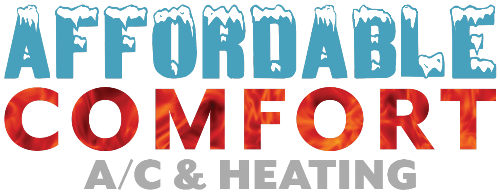How to Set the Right HVAC Temperature
Homeowners shouldn’t go below 74 when they’re home if they want to enjoy a comfortable interior without raising energy bills.
It’s tempting to set the HVAC to low temperatures during summer. However, it puts the system under heavy strain and can shorten its lifespan. So, homeowners should ensure their unit operates within an optimal range.
Let’s discuss this efficient temperature range:
What’s the ideal temperature setting of an HVAC?
Set the HVAC at around 75 degrees Fahrenheit in the summer. Homeowners shouldn’t go below 74 when they’re home if they want to enjoy a comfortable interior without raising energy bills.
Tips to increase HVAC efficiency in the summer
Here are a few ways to maximize comfort and reduce electricity consumption during summer:
Adjust the thermostat
Consider setting the thermostat to a higher setting when nobody’s home. Homeowners may want to shut down their HVAC entirely in these situations, but this is counterproductive. In addition, it can cost a lot of money due to the additional energy the unit needs to cool the place down to a specific comfort zone.
Instead, increase the temperature by around 7 to 10 degrees Fahrenheit. Making this tweak on a programmable thermostat can reduce energy bills by up to 10%.
Avoid colder settings
Another mistake people make is setting their thermostats on a cold regime, thinking it’ll cool down the house faster when they’re away. However, the temperature won’t drop any quicker. This makes the HVAC run longer, leading to unnecessary expenses.
Smart thermostats can solve this problem. The owner can automatically set them to increase the temperature when they’re not home. Afterward, they can reset them to ensure a comfortable atmosphere by the time they return.
Employ other gadgets
An average household can be full of appliances that can lower energy bills. For instance, ceiling fans can go a long way in improving the effectiveness of an HVAC system by increasing airflow. They don’t reduce temperatures directly, but they make the residents feel more comfortable and cooler by allowing the air to circulate faster.
People without ceiling fans can achieve this effect with standalone fans. Available in various styles and sizes, they can be placed in any room to pull air through and provide instant relief.
Additional money-saving suggestions include:
Open a window at night and turn down the HVAC to reduce temperatures naturally. Close it in the morning to trap the colder air.
Close window coverings to lower the amount of sunlight entering the house.
Install weatherstripping to door and window openings. It prevents heat from breaking through cracks and keeps cool air from escaping.
Don’t use ovens, clothes dryers, and hair dryers when it’s hot.
Experts can make a world of difference
If adjusting the temperature doesn’t provide relief, it usually indicates a malfunctioning HVAC unit. In this case, don’t try to troubleshoot without professional help. Instead, reach out to an HVAC technician to solve the issue safely and efficiently.
Trust locally-owned and operated Affordable Comfort A/C and Heating for HVAC preventative maintenance and thermostat services. Call 602-574-1205 to schedule a consultation.

